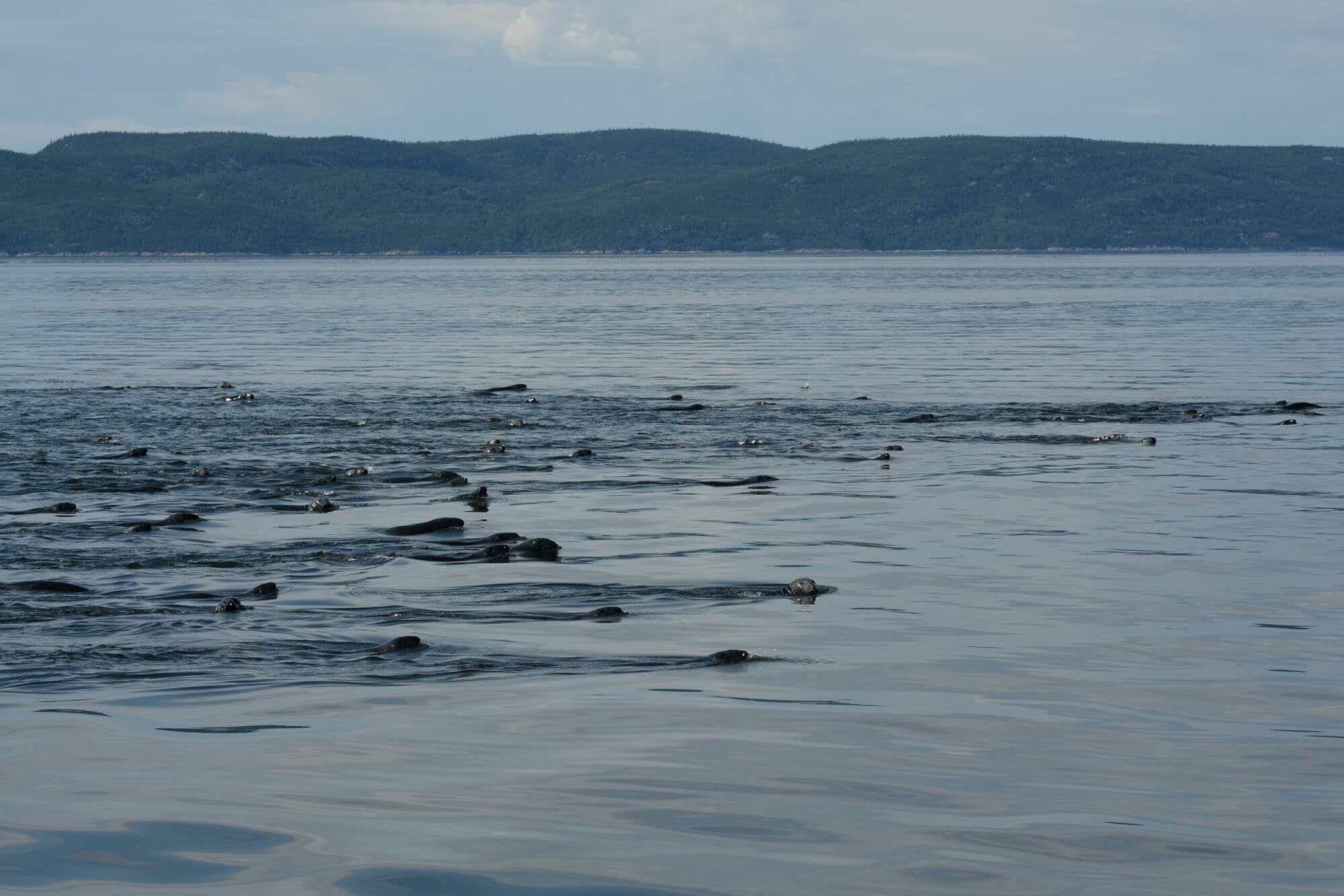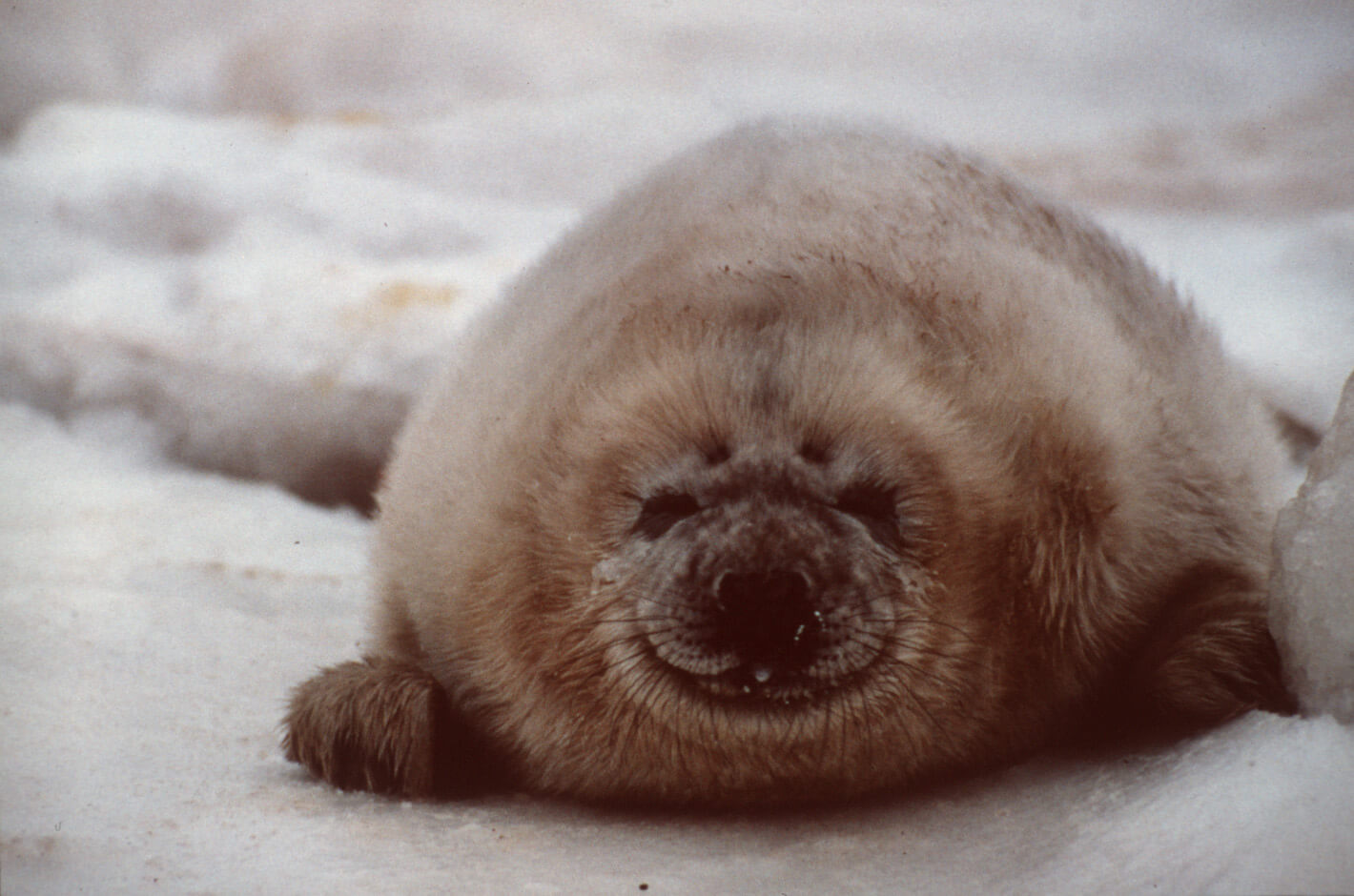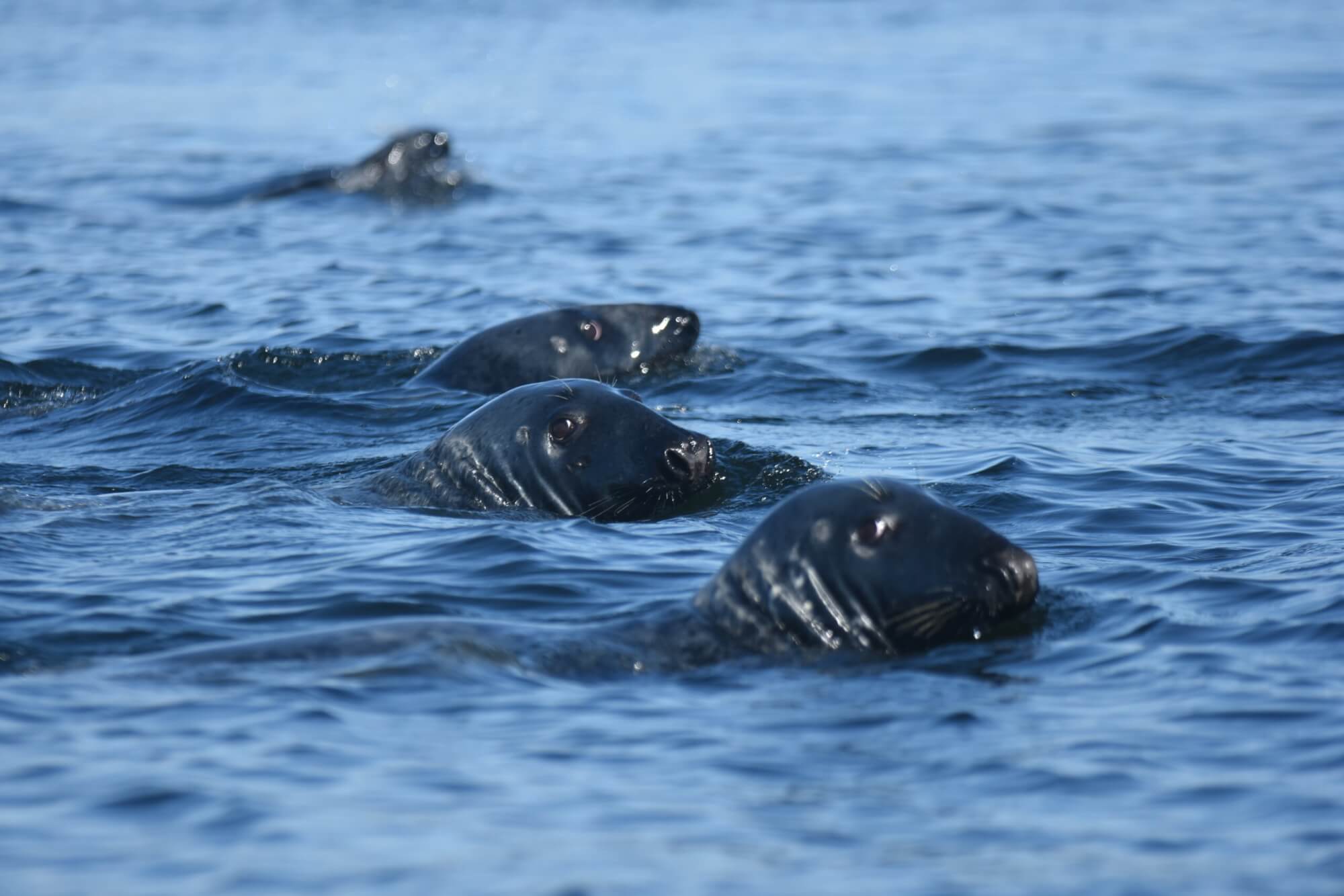Feeding
The grey seal is an opportunist that feeds on whatever it can find in its environment. With a highly varied menu that includes cod, ray, herring, white hake, groundfish, sand lance, crustaceans, haddock, pollock, etc., this voracious mammal can eat 7.5 to 12.5 kg of prey per day. Grey seals often feed alone, but may on occasion hunt in groups. On a few occasions, it has also been observed that grey seals may attack and eat other members of their species, in addition to harbour seals and harbour porpoises.
On the surface
Whether on land or on the pack ice, grey seals gather to form what are called haulouts. They will also move from one place to another by swimming across the water surface before diving to forage for food.
Diving
When it dives, this pinniped can stay under water for between 4 and 10 minutes, with the record being 30 minutes. The grey seal generally dives to depths of between 60 and 100 m, but in some cases can reach depths of up to 200 m.
Social
Despite being a rather gregarious marine mammal when at a haulout site, the grey seal is often solitary when it comes time to take to the water. On the other hand, when necessary, it may sometimes team up with other individuals to hunt. In the St. Lawrence, it is often found alone during the summer months. Significant sexual dimorphism is observed in this species, with males being much more massive than females.
Vocalizations
Grey seals are very vocal at haulout sites, but are also believed to be quiet noisy when under water. A recent study has shown that during the mating season, males clap their flippers. Under water, this movement likely makes a loud “smack!” and is believed to be used by bulls to show off their strength and attract females.








